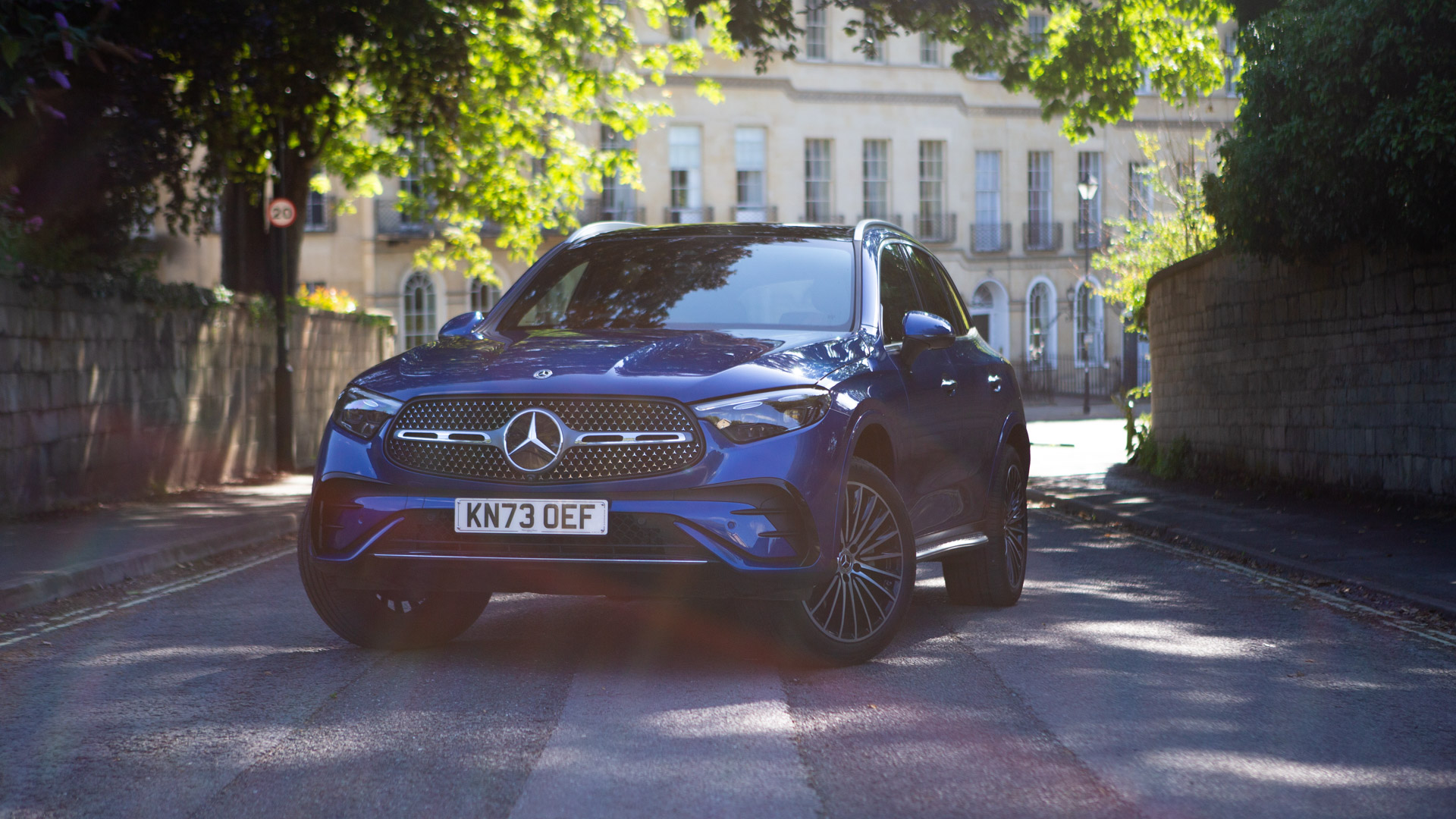
When it comes to electric vehicles, the SUV reigns supreme. The larger form factor and raised stature make it easier to add a sizeable battery than any other type of car. SUVs are popular across all powertrains though, eclipsing sales for saloon cars and making up around 60% of all UK sales in 2023.
The Mercedes-Benz GLC sits in the middle of the company’s SUV offerings – with GLA and GLB models below it, and GLE and GLS above it. There is a coupé version, should you want a sportier look, however the all-electric version – known as the EQC – has been discontinued.
While I’m sure a fully electric version will return (possibly with a new name), the GLC does offer a plug-in hybrid engine option. In fact, it offers three including a petrol and diesel hybrid and an AMG version. I tested out the petrol plug-in hybrid model, the GLC 300e, to see how it performed as a regular daily driver.
Opting for a plug-in hybrid is fast becoming the perfect compromise between the range of a petrol motor and the economical and ecological benefits of the battery-powered electric motor. The GLC offers one of the best electric only ranges, with over 76 miles available, much like the E-Class hybrid, which won our T3 car of the year for partly the same reason.
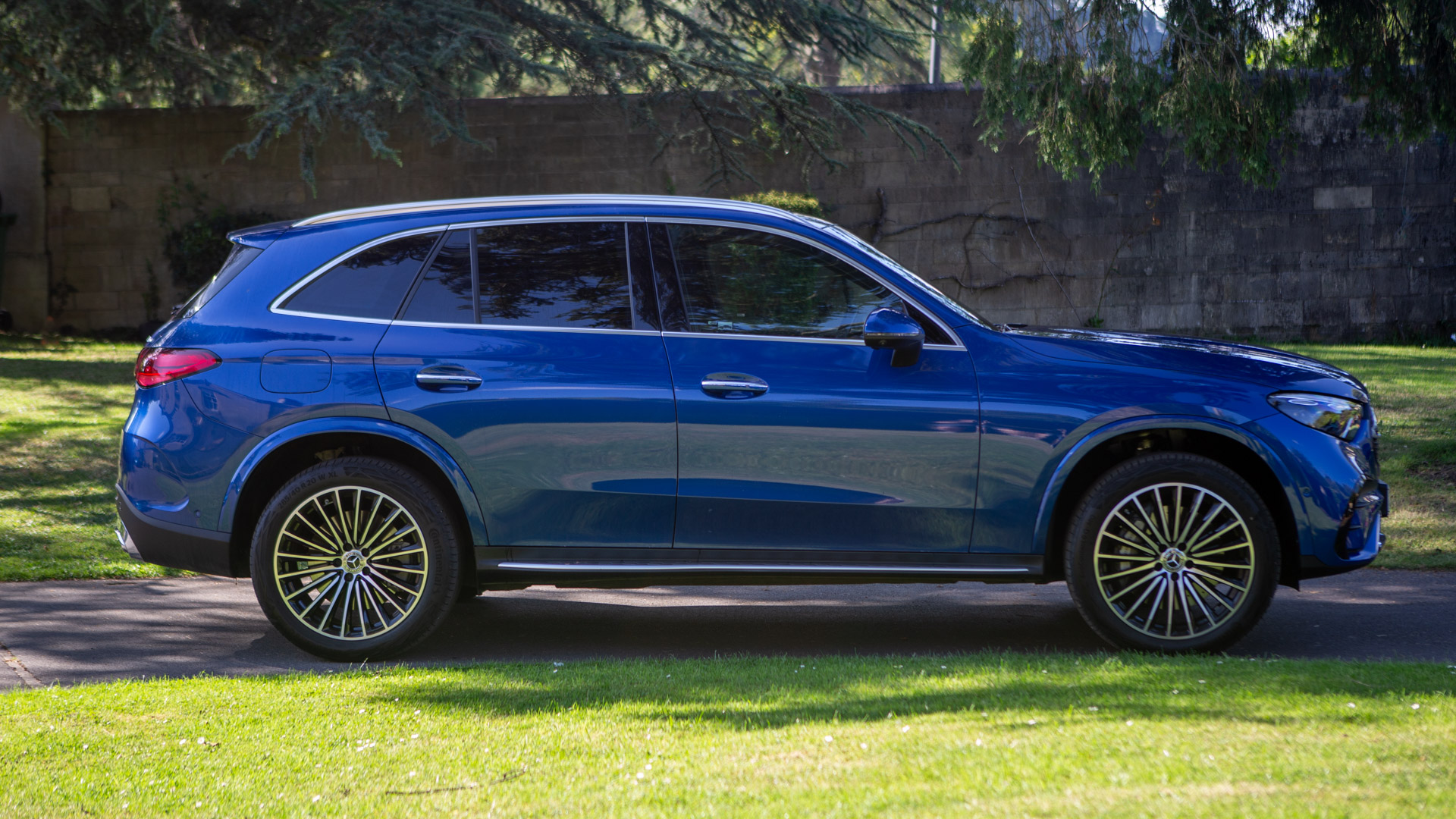
How much is the Mercedes-Benz GLC 300e?
The Mercedes GLC starts from £52895 in the UK for the 220d diesel model, with the plug-in hybrid starting from £58,860. In the US, the GLC 300 is the entry model and this starts from $47,450. There are no GLC plug-in hybrids available in the US, though all are mild hybrids – which aren’t quite as useful, as you can’t travel on electric only power.
If you want a higher spec model, the GLC 300e AMG Line Premium Plus models start from £73,360, while the Mercedes-AMG GLC 63 Se models start from £109,030. I was testing the Mercedes-Benz GLC 300e AMG Line Premium Plus edition in spectral blue, priced at £76,570.
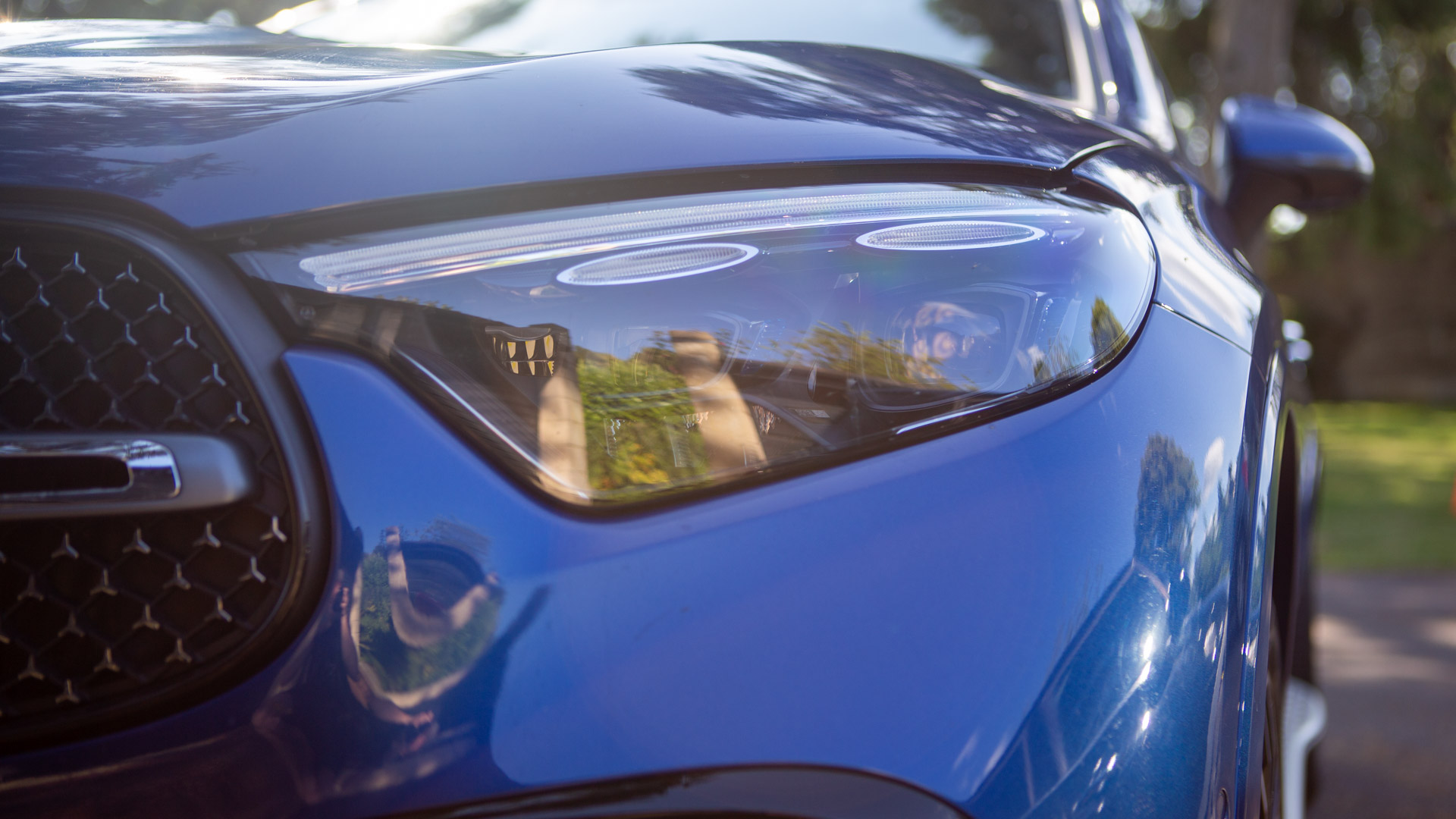
Features and design
From first glance, the GLC is a good-looking SUV. It has that classic SUV styling and yet is a little more curvaceous than the smaller GLB / EQB model. The EQC all electric version didn’t look that different to this PHEV model, as it was the first EQ in the range – and I suspect it will be one of the first on the new platform in coming years.
The front grill features a heavy chrome line that joins the large three-pointed star on the grill and there remains a small gap between the grill and the headlights. However, the headlights are more elongated than some and feature the daylight running LEDs in a strip above each of the powerful Digital Light headlights that comes as standard here on all but the entry model.
There’s chrome detailing around the window frame and on the roof bars. There’s also a step that runs the length of the side of the car, to help you get in and out – signalling the larger size of this SUV. However, it doesn’t feel too big. It’s around 13mm longer than a BMW X3 and about 27mm wider.
It sits on 20-inch alloys for the most part – aside from the entry level AMG Line model which has 19-inch alloys. The multi-spoke design on the Premium Line Plus and the Urban edition models are particularly nice, similar to those on the E-Class and S-Class saloon cars.
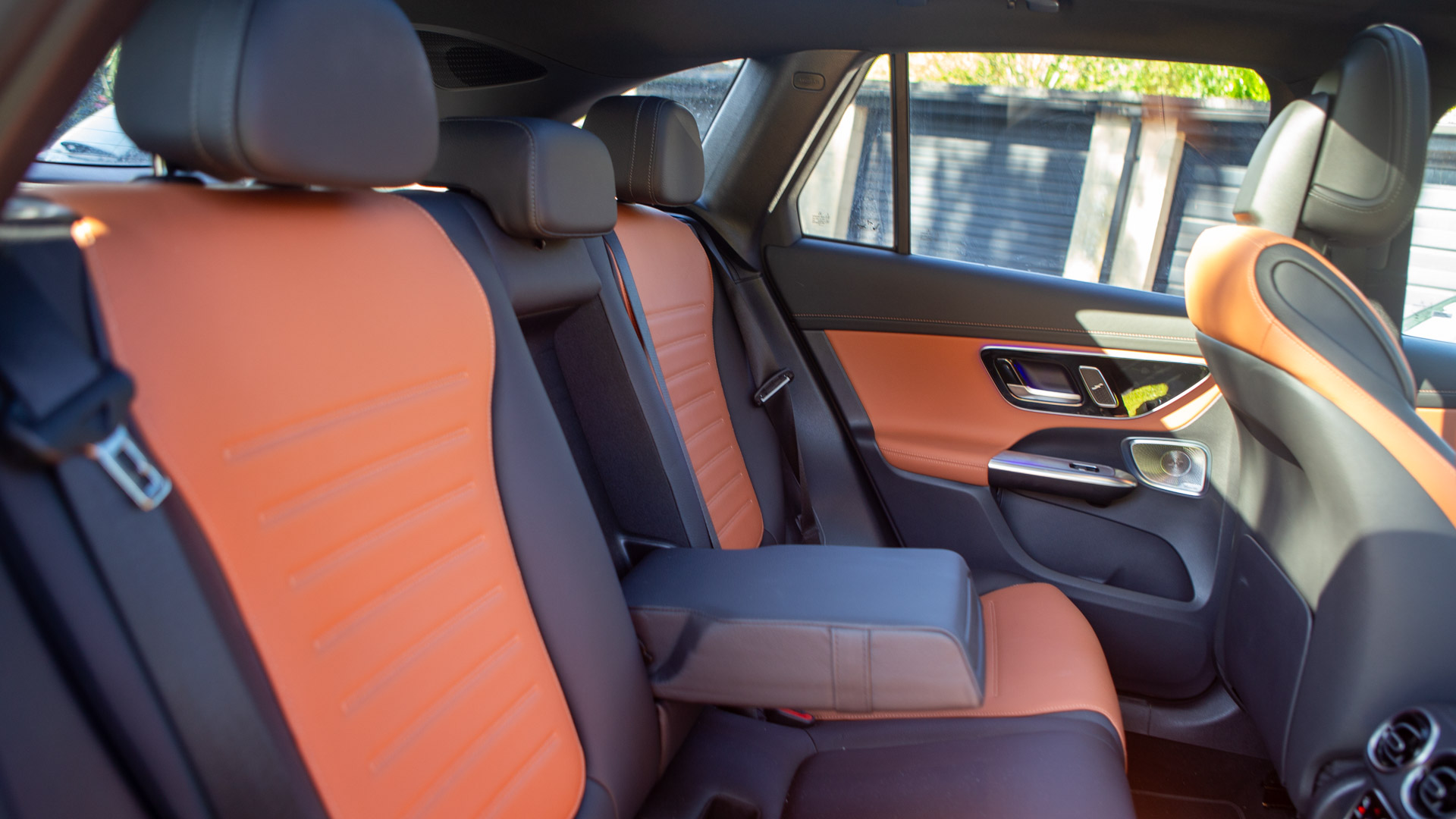
There’s a choice of nine paint colours, including the standard white, five metallic options, including the spectral blue, and three special Manufaktur colours. The spectral blue looks very classy, though I also like the verde silver option, which appears slightly turquoise.
My only slight criticism is the GLC’s wing mirrors. For an SUV of this size, they seem unusually small and therefore don’t offer much view of the road behind. While they do suit the design, a little larger would help the drive experience.
Inside, the cockpit is bathed in ambient lights, with 64 colours, 10 themes and five brightness levels. The centre console and dash has a brushed metal finish, while Artico artificial leather is used for the dash trim and upholstery to impressive effect. The model I tested featured a sienna brown Artico for some of the upholstery and sports seats, which looked almost orange against the dark grey and black. It’s certainly divisive but it kind of works. The standard option is a more reserved black though.
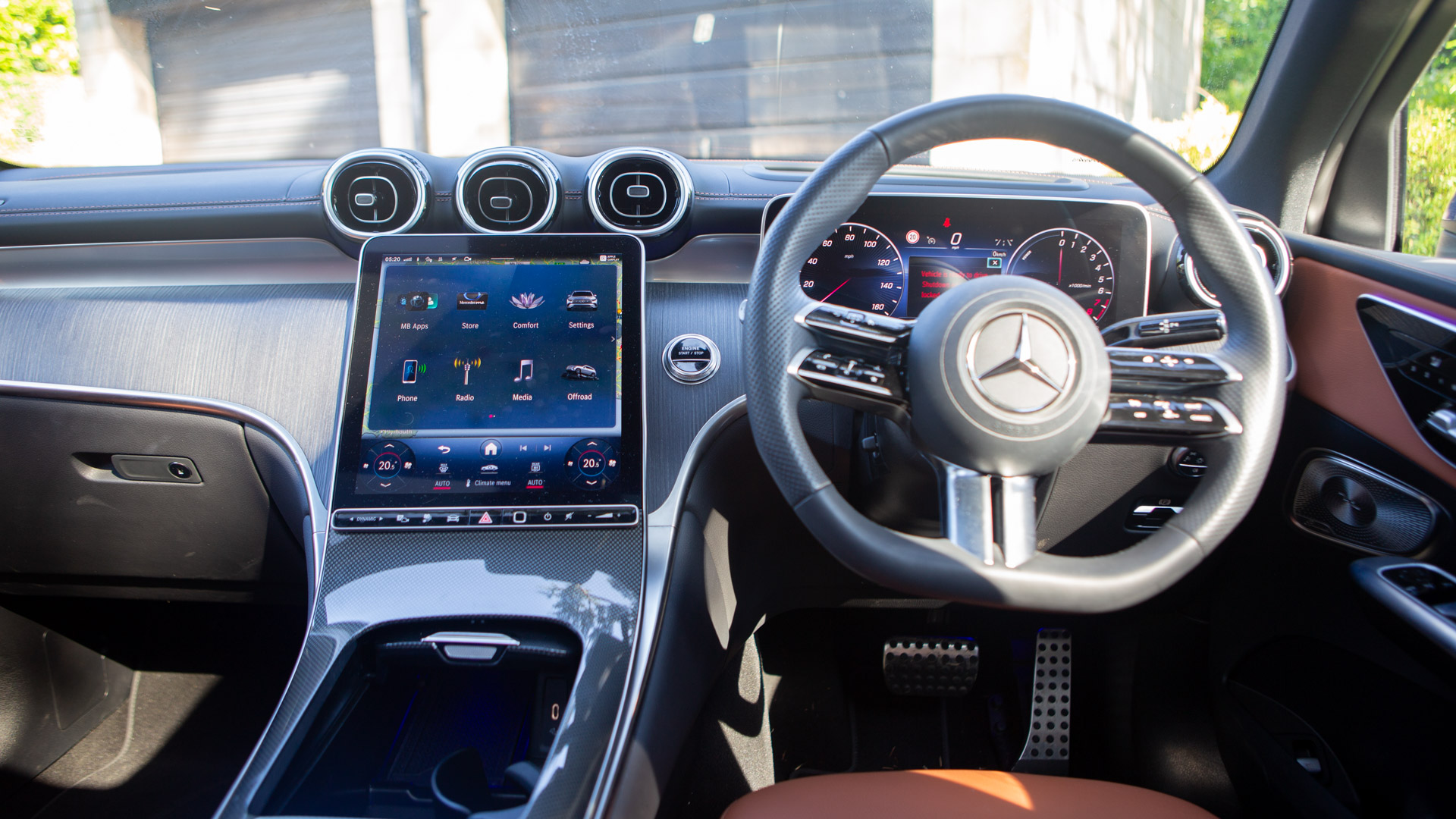
Technology
Following other C-designated Mercedes, the GLC features a 11.9-inch touchscreen display in the centre in a vertical format. This is complemented by a large 12.3-ich driver display screen behind the steering wheel and on my test model, a head-up display which provides loads of info for the journey.
This runs the latest MBUX operating system, giving you access to all the Mercedes Me features and apps – some available as add ons. You will need the data subscription to connect to streaming services directly, but over the air updates and navigation all come under the standard connection.
Wireless Android Auto and Apple CarPlay functions are available on all models as standard, as is a wireless charging tray for your phone. All models get four USB-C ports, between the centre armrest and the console, while all but the urban edition get two more in the rear armrest. The Premium Plus model I tested also benefits from the rather excellent Burmester 3D surround sound system that comprises 13 speakers and a 9-channel amp. If you love to listen to music in your car, this is worth the model upgrade alone, as it sounds incredible.
Active Park Assist features come as standard on all models, though the 360-degree camera that gives you that handy birds eye view comes on the Premium and Premium Plus models. To get the active distance assist (adaptive cruise control) and active steering assist, which make up a level 2 autonomous driving capability, you need the Driving Assistance Package. This adds £1695 to the price but is worth it for longer journeys and heavy traffic. It also brings a number of extra safety features, like the evasive steering assist and active brake assist for encountering vehicles, bikes or pedestrians.
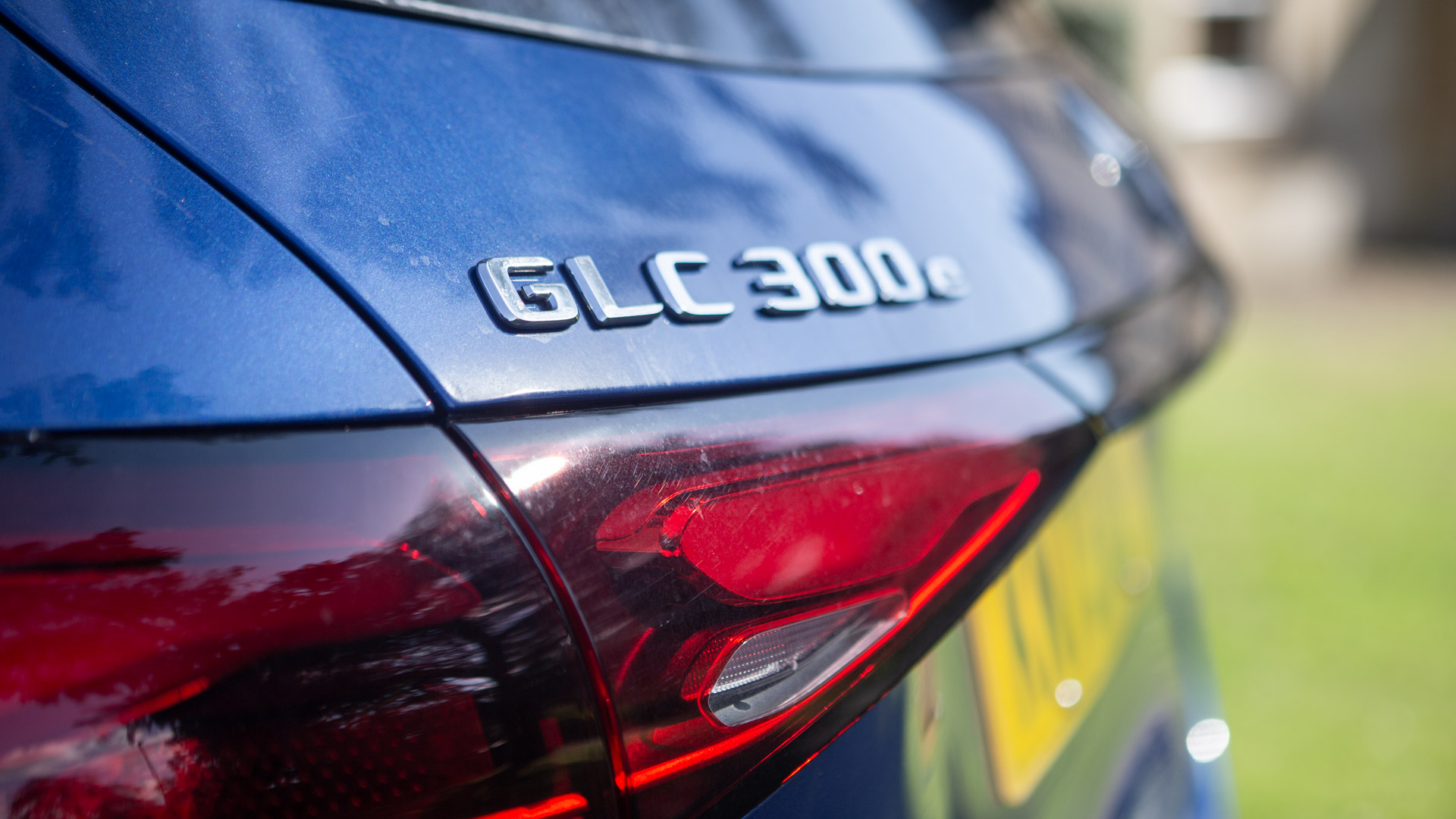
The Premium Plus model I tested also benefits from the rather excellent Burmester 3D surround sound system that comprises 13 speakers and a 9-channel amp. If you love to listen to music in your car, this is worth the model upgrade alone, as it sounds incredible.
Active Park Assist features come as standard on all models, though the 360-degree camera that gives you that handy birds eye view comes on the Premium and Premium Plus models. To get the active distance assist (adaptive cruise control) and active steering assist, which make up a level 2 autonomous driving capability, you need the Driving Assistance Package. This adds £1695 to the price but is worth it for longer journeys and heavy traffic. It also brings a number of extra safety features, like the evasive steering assist and active brake assist for encountering vehicles, bikes or pedestrians.
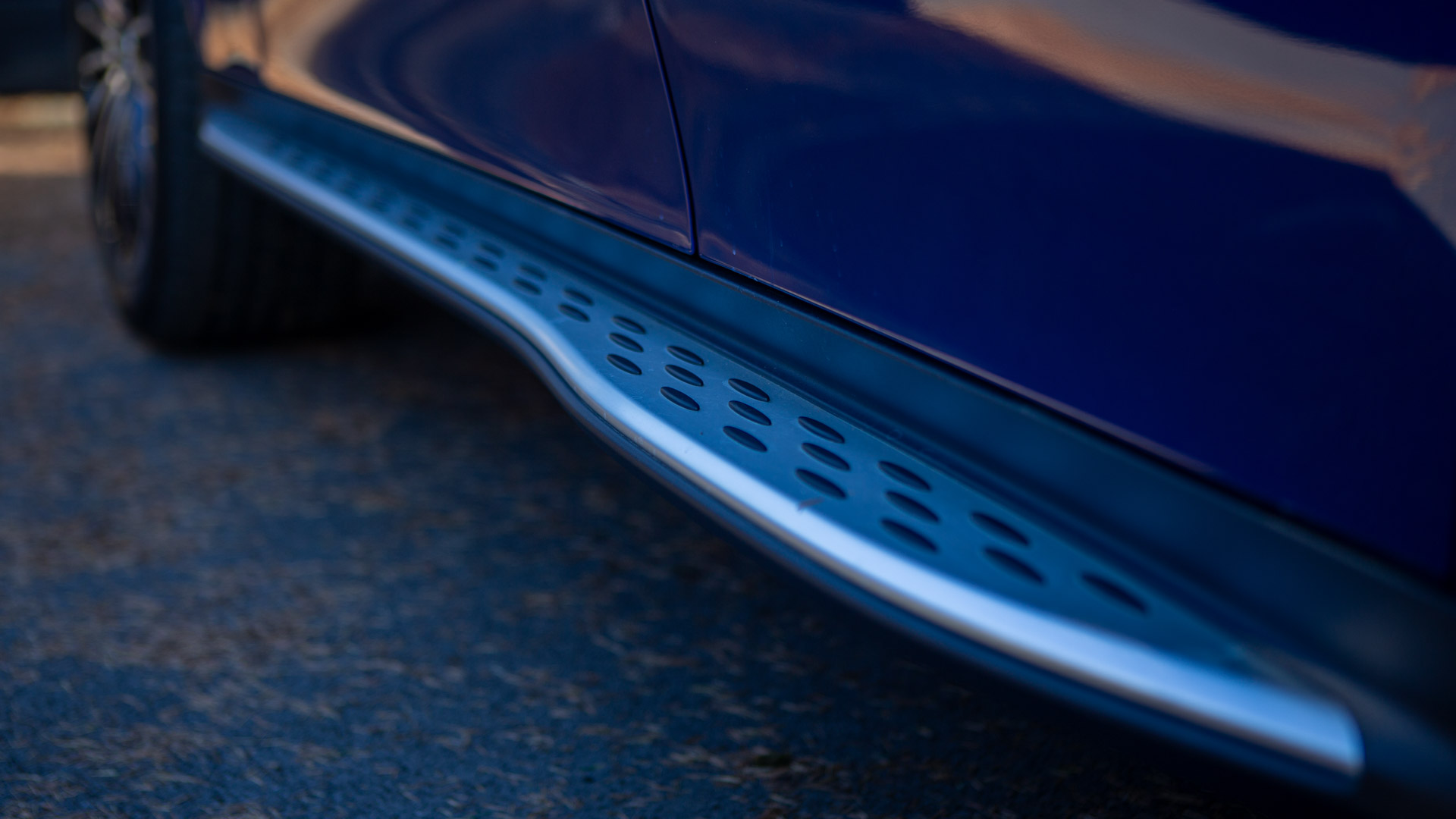
Performance and drive
With its 2.0-litre petrol engine and electric motor combined, the GLC 300e delivers 330 horsepower and a 0-62mph acceleration of 6.7 seconds. It’s a respectable amount of power, if not the sub 5-second times of the AMG models.
In practice, the GLC is using the electric power to boost that initial acceleration to get you off the line, and so you can really tell the difference when you switch the car into the battery save mode to use just the petrol engine. It’s something you might want to consider doing for longer journeys but as it has a relatively large battery, you can mostly leave it driving in hybrid mode.
The plug-in hybrid models all feature comfort and self-levelling suspension, which results in a very smooth and comfortable ride. Long journeys and trips around town are a breeze and the GLC remains quite agile with a decent turning circle, despite its size.
Switch over to the Sport mode and things do tighten up. The steering feels more responsive and the throttle response increases, letting you work that engine a little harder to pick up speed. There’s also an off-road mode here, should you need help with grip, and an eco mode for a more economical drive.
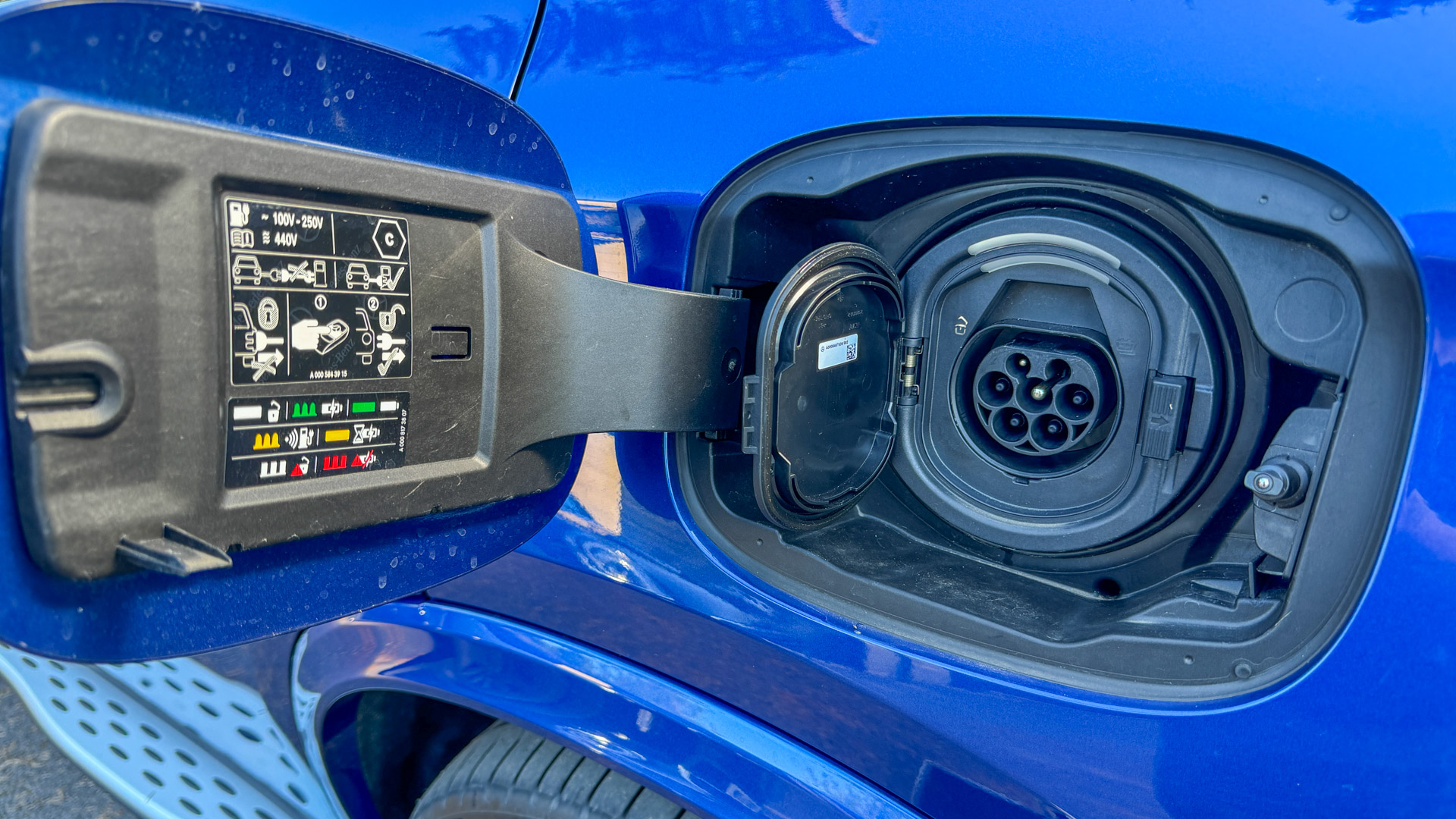
Importantly too, driving in full electric mode feels fast and responsive. For driving around town or doing short trips you don’t feel like you’re missing out by going into the electric drive mode. Plus, it means that petrol tank stays full.
When it comes to charging, the GLC 300e does support both AC home charging and DC fast charging at up to 60W. However, on UK models there is only the Type 2 connection on the car – not the larger CCS connection used by most fast chargers, so you are somewhat limited as to where you can charge the battery on the road. If you have a home charger though, you can keep this topped up with a relatively short charge of 2:45 on an 11kW charger.
As with other hybrid cars, the setting for hybrid driving resets each time you turn the car off. So if you want to select electric only, or petrol only (battery save), you need to do that everytime you set off. Thanks to the larger battery, this is less of a problem though, as driving in hybrid mode will probably be your default. It would be nice to have the option though.
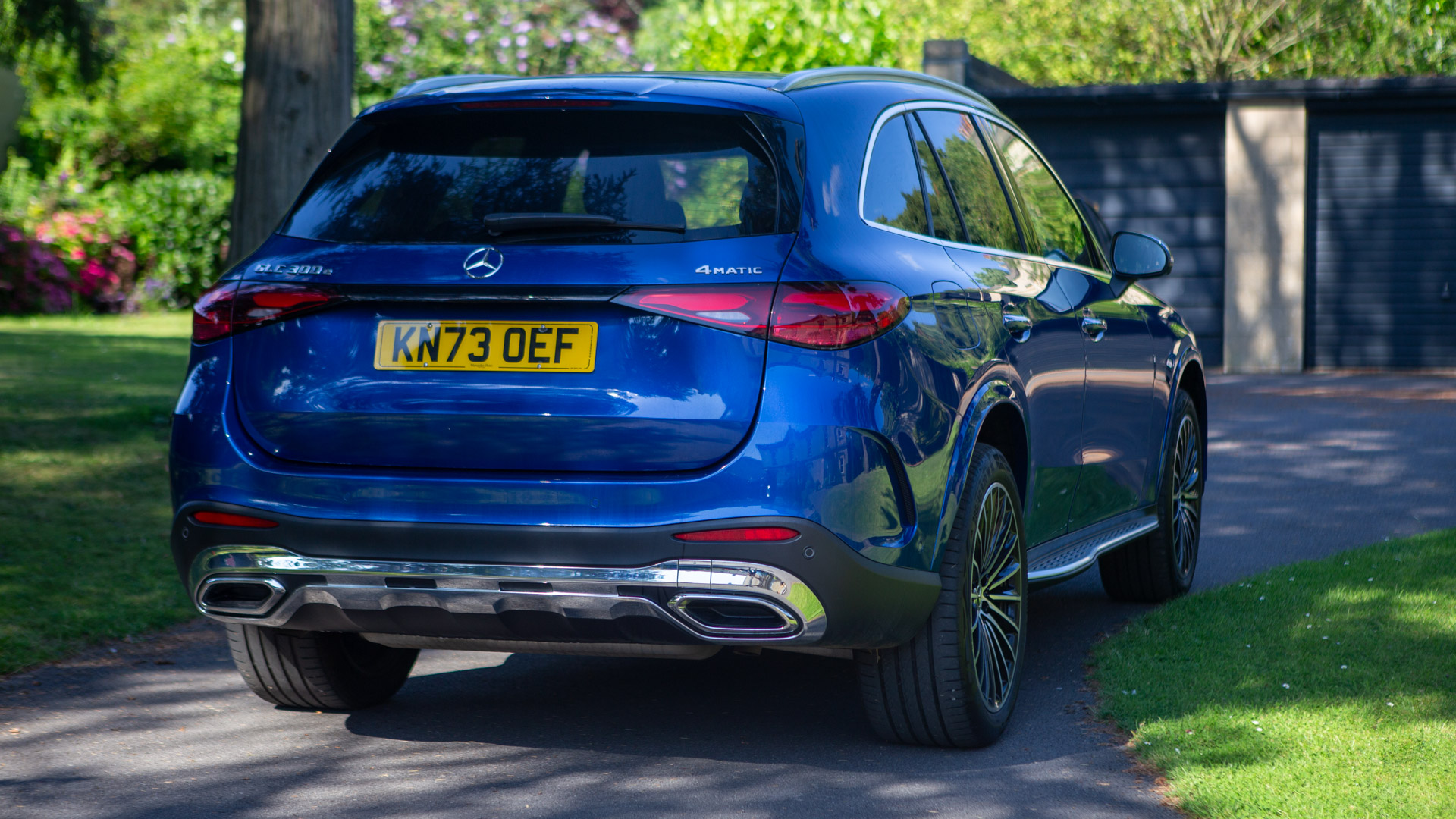
Should I buy a Mercedes-Benz GLC 300e?
While there are bigger and fancier SUV options – as well as smaller and cheaper ones – the Mercedes GLC hits just right. It offers a comfortable ride and is great for city and country drives.
The quality of the finish, inside and out gives you that premium feel you’d expect from a Mercedes, though still at a reasonable price. The biggest selling point though has to be that plug-in hybrid powertrain, giving one of the largest electric ranges. Only a few, like the Range Rover Sport, comes close.
While ultimately, going fully electric will be the way forward. Right now a hybrid like the GLC makes more sense for those that do longer trips. If you want that freedom in an SUV, I’d highly recommend this model.







